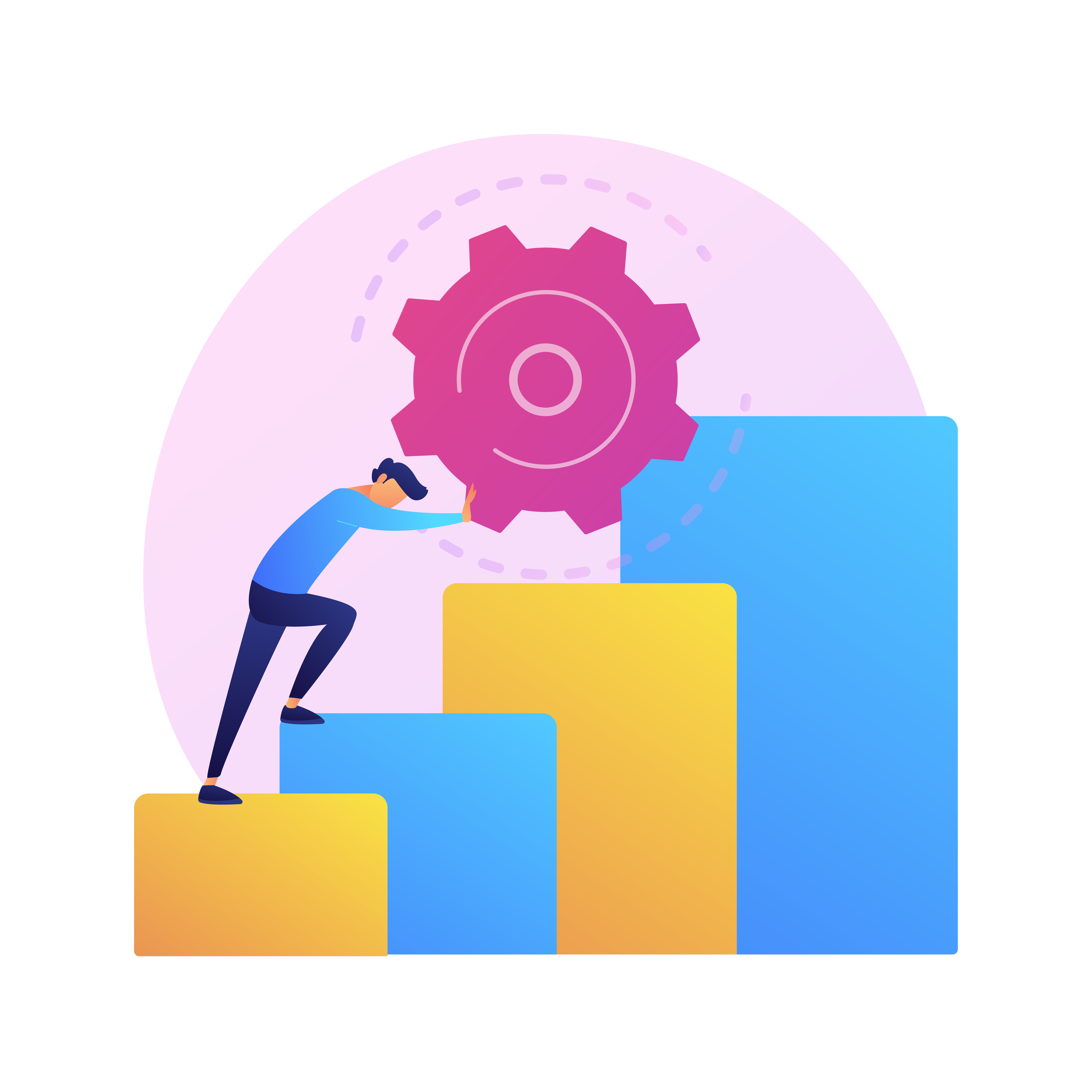Microlearning has transformed workplace training. Research shows that microlearning can boost knowledge retention by up to 50% and employee engagement by up to 85%. As we move through 2025, understanding microlearning best practices for creating effective programs has become essential for training success.
This guide from 5mins.ai shares 15 proven rules for microlearning effectiveness. Whether you're creating your first program or refining an existing strategy, these practices will help you build learning experiences that deliver results.
What is Microlearning and Why It Matters in 2025?
Microlearning breaks complex topics into focused segments that learners complete in short sessions. Each module targets a specific learning objective and typically takes 3 to 10 minutes to complete. This approach aligns with how our brains naturally process and retain information.
The method relies on three core principles: chunking, repetition, and recall. Chunking divides information into smaller pieces. Strategic repetition reinforces these segments over time. Recall activities prompt learners to apply knowledge, strengthening retention. Together, these principles create learning experiences that respect working memory limits while building long-term understanding.
1. Keep Content Focused and Bite-Sized
Each module should address one concept, skill, or task. When you try to cover multiple topics in a single lesson, learners struggle to absorb information.
Optimal module length sits between 3 to 7 minutes. This duration allows focused coverage while fitting into natural work breaks. For complex topics, split content into multiple short modules rather than creating longer sessions.
Start with the core concept in the first 30 seconds. Present supporting details next. End with a quick application activity. Remove any content that doesn't directly support your learning objective.
Mobile phones are now the most common way learners access training. Designing for mobile-first means considering how content appears on smaller screens from the start.
Keep text readable without zooming. Use short paragraphs and clear fonts. Make navigation elements large enough to tap easily. Videos should load quickly on varying connection speeds. Modern microlearning best practice platforms like 5mins.ai prioritize mobile experience to ensure seamless learning on any device.
Complex charts that work on desktop may become unreadable on phones. Audio narration paired with simple visuals often works better than text-heavy slides. Test modules on actual mobile devices before launch.
3. Use Multimedia and Interactive Elements
Mixing text, images, videos, and audio creates richer learning experiences. Videos work well for demonstrating processes or showing workplace scenarios. Keep them short and add captions for accessibility.
Interactive elements transform passive viewing into active learning. Quizzes, drag-and-drop activities, and scenario-based questions make learners think. These interactions provide immediate feedback, helping correct misunderstandings.
Images and graphics should clarify concepts, not just decorate pages. Use screenshots for software interfaces and diagrams for relationships between ideas.
4. Leverage Spaced Repetition for Better Retention
People lose most newly learned information within days unless they review it. Spaced repetition combats this by timing review sessions at strategic intervals.
Schedule a brief review within 24 hours after initial learning. Follow with another after one week, then after one month. This pattern significantly improves long-term retention compared to one-time training. Following microlearning best practices like spaced repetition ensures knowledge sticks.
Modern learning platforms can automate spaced repetition, tracking what each learner completed and sending review reminders. Some adjust spacing based on quiz performance.
5. Make Content Easy to Access and Navigate
Organize content into clear categories that match how people think about their work. Use descriptive titles that tell learners exactly what each module covers.
Create learning paths that guide employees through related content in logical sequences. Search functionality becomes critical as your library grows. Add tags or filters that let learners narrow results by topic or time to complete.
6. Align Learning with Real-World Applications
Start each module by explaining why the content matters for the learner’s specific role. Use realistic, role-based scenarios to make lessons relevant and memorable. For example, if teaching conflict resolution, illustrate situations employees actually face: handling an angry customer return in retail, de-escalating with anxious patients in healthcare, or calming frustrated users in tech support. These tailored examples help learners immediately connect training to their day-to-day challenges.
End modules with clear next steps learners can take immediately. Specific, actionable takeaways increase the chance that training translates into changed behavior. Consider creating job aids that complement your modules.
7.Track and Measure Engagement Effectively
Completion rates don't reveal whether learning happened. Look deeper with multiple metrics.
Time spent on content provides useful context. Quiz scores show knowledge acquisition, but patterns matter more than individual results. Return visits indicate learners find value in content.
Surveys provide direct feedback that numbers can't capture. Ask specific questions about clarity, relevance, and usefulness.
8. Personalize the Learning Experience
Adaptive learning paths adjust based on assessment results. Those demonstrating mastery skip ahead to new content. Those struggling receive additional practice.
Role-based content ensures people see training relevant to their work. Offer content in multiple formats to reach different learning preferences. Allow learners to set their own pace within reasonable boundaries.
9. Integrate Microlearning into Daily Workflows
Just-in-time learning delivers content exactly when people need it. Someone about to use a new feature can access a quick tutorial right then.
Trigger microlearning based on work activities. When someone starts a new project type, automatically suggest relevant modules. Morning huddles create natural opportunities for brief learning moments.
10. Create Clear Learning Objectives
Every module should answer: what will learners be able to do after completing this? Write objectives using action verbs that describe observable behaviors.
Share objectives at the start of each module. Design assessments that directly measure stated objectives. Limit each module to one or two objectives.
11. Use Storytelling and Real-Life Scenarios
Frame training within relevant workplace stories. Instead of listing process steps, show someone successfully using that process to solve a problem.
Use authentic scenarios that learners might encounter. Pull from actual customer interactions or common workplace problems. Keep stories brief and focused.
12. Ensure Content Quality Over Quantity
Invest time in development. Research thoroughly, write clearly, and test with real learners before wide release. Review existing content regularly as processes change. Applying microlearning best practices means prioritizing quality over quantity.
Expert review catches errors and adds credibility. Remove content that doesn't meet quality standards rather than leaving it active.
13. Foster Social Learning and Collaboration
Discussion forums let learners ask questions and share insights. Peer learning connects people working on similar challenges.
Team challenges apply microlearning in group settings. Recognition systems that celebrate achievements tap into social motivations and show the organization values development.
14. Continuously Update and Refresh Content
Build updates into regular workflows. Assign owners for each topic who monitor for necessary changes. Collect feedback from learners, managers, and subject matter experts.
Version control helps track changes over time. Communicate updates to learners who completed older versions, showing content stays current.
5mins.ai provides a comprehensive platform designed to help you create, deliver, and manage effective microlearning best practices programs. Our solution includes mobile-first design, spaced repetition algorithms, personalized learning paths, and robust analytics to track engagement. Book a demo to see how 5mins.ai can transform your workplace training.
15. Leverage Data and AI to Continuously Improve Learning
Modern learning doesn’t stop at delivering content it evolves through insights. By leveraging data analytics and artificial intelligence, organizations can identify patterns in learner behavior, measure content effectiveness, and adapt training in real time. AI can recommend personalized learning paths, automate spaced repetition schedules, and even flag modules where engagement drops.
5Mins.ai use these insights to refine microlearning best practices strategies continuously. This data-driven approach ensures that every lesson becomes smarter, more relevant, and more impactful over time.
Frequently Asked Questions
How long should a microlearning module be?
Most effective microlearning modules run between 3 to 7 minutes. This length allows focused coverage of one concept while fitting into natural breaks in work schedules. Complex topics should be split into multiple short modules rather than creating longer sessions.
What's the difference between microlearning and traditional e-learning?
Traditional e-learning typically delivers longer courses covering broad topics in one session. Microlearning breaks content into focused, bite-sized modules that each address specific learning objectives. Microlearning also emphasizes mobile access, spaced repetition, and just-in-time delivery.
How often should learners review microlearning content?
Follow spaced repetition principles: review within 24 hours after initial learning, again after one week, then after one month. This pattern significantly improves long-term retention compared to one-time training sessions.
Can microlearning work for complex topics?
Yes, but complex topics need careful chunking into logical sequences. Create learning paths that guide learners through related modules in order. Each module should build on previous ones while maintaining focus on a single concept or skill.
How do I measure microlearning effectiveness?
Track multiple metrics beyond completion rates: time spent on content, quiz scores, return visits, behavior change, and learner feedback. Use surveys to gather qualitative insights. The most important measure is whether training leads to improved job performance.
What's the best format for microlearning content?
Mix formats based on your content and audience. Videos work well for demonstrations. Interactive scenarios suit decision-making skills. Text with images serves reference content. Most programs benefit from varied formats that appeal to different learning preferences.
How much does it cost to create microlearning?
Costs vary widely based on production quality, content complexity, and tools used. Basic modules using existing tools might cost a few hundred dollars. High-production video content or custom interactive elements can cost thousands per module. Focus on creating fewer high-quality modules rather than many mediocre ones.
Do I need special software to deliver microlearning?
Learning management systems (LMS) or learning experience platforms (LXP) provide structure for organizing and delivering microlearning content. However, simpler approaches using existing tools can work for smaller programs. The key is making content easily accessible and trackable.
.png)



